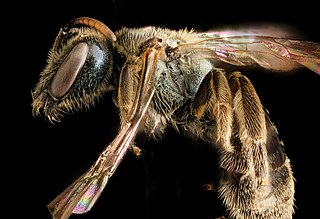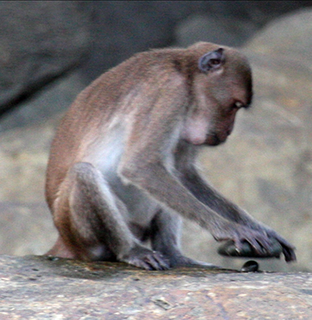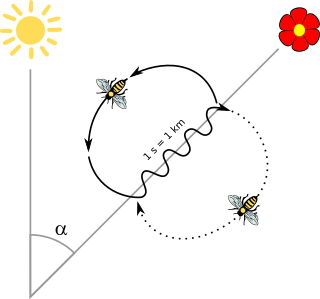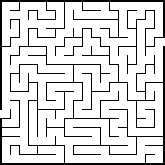Related Research Articles

Ethology is the scientific and objective study of animal behaviour, usually with a focus on behaviour under natural conditions, and viewing behaviour as an evolutionarily adaptive trait. Behaviourism as a term also describes the scientific and objective study of animal behaviour, usually referring to measured responses to stimuli or to trained behavioural responses in a laboratory context, without a particular emphasis on evolutionary adaptivity. Throughout history, different naturalists have studied aspects of animal behaviour. Ethology has its scientific roots in the work of Charles Darwin (1809-1882) and of American and German ornithologists of the late 19th and early 20th century, including Charles O. Whitman, Oskar Heinroth (1871-1945), and Wallace Craig. The modern discipline of ethology is generally considered to have begun during the 1930s with the work of Dutch biologist Nikolaas Tinbergen (1907-1988) and of Austrian biologists Konrad Lorenz and Karl von Frisch (1886-1982), the three recipients of the 1973 Nobel Prize in Physiology or Medicine. Ethology combines laboratory and field science, with a strong relation to some other disciplines such as neuroanatomy, ecology, and evolutionary biology. Ethologists typically show interest in a behavioural process rather than in a particular animal group, and often study one type of behaviour, such as aggression, in a number of unrelated species.

Bee learning and communication includes cognitive and sensory processes in all kinds of bees, that is the insects in the seven families making up the clade Anthophila. Some species have been studied more extensively than others, in particular Apis mellifera, or European honey bee. Color learning has also been studied in bumblebees.

Animal cognition encompasses the mental capacities of non-human animals. The study of animal conditioning and learning used in this field was developed from comparative psychology. It has also been strongly influenced by research in ethology, behavioral ecology, and evolutionary psychology; the alternative name cognitive ethology is sometimes used. Many behaviors associated with the term animal intelligence are also subsumed within animal cognition.

Foraging is searching for wild food resources. It affects an animal's fitness because it plays an important role in an animal's ability to survive and reproduce. Foraging theory is a branch of behavioral ecology that studies the foraging behavior of animals in response to the environment where the animal lives.

In cognitive psychology and neuroscience, spatial memory is a form of memory responsible for the recording of information about one's environment and spatial orientation. For example, a person's spatial memory is required in order to navigate around a familiar city, just as a rat's spatial memory is needed to learn the location of food at the end of a maze. It is often argued that in both humans and animals, spatial memories are summarized as a cognitive map.

Waggle dance is a term used in beekeeping and ethology for a particular figure-eight dance of the honey bee. By performing this dance, successful foragers can share information about the direction and distance to patches of flowers yielding nectar and pollen, to water sources, or to new nest-site locations with other members of the colony.
Explicit memory is one of the two main types of long-term human memory, the other of which is implicit memory. Explicit memory is the conscious, intentional recollection of factual information, previous experiences, and concepts. Explicit memory can be divided into two categories: episodic memory, which stores specific personal experiences, and semantic memory, which stores factual information. Explicit memory requires gradual learning, with multiple presentations of a stimulus and response.

The ventromedial nucleus of the hypothalamus is a nucleus of the hypothalamus. "The ventromedial hypothalamus (VMH) is a distinct morphological nucleus involved in terminating hunger, fear, thermoregulation, and sexual activity." This nuclear region is involved with the recognition of the feeling of fullness.

Diurnality is a form of plant or animal behavior characterized by activity during daytime, with a period of sleeping or other inactivity at night. The common adjective used for daytime activity is "diurnal". The timing of activity by an animal depends on a variety of environmental factors such as the temperature, the ability to gather food by sight, the risk of predation, and the time of year. Diurnality is a cycle of activity within a 24-hour period; cyclic activities called circadian rhythms are endogenous cycles not dependent on external cues or environmental factors. Animals active during twilight are crepuscular, those active during the night are nocturnal, and animals active at sporadic times during both night and day are cathemeral.

Latent learning is the subconscious retention of information without reinforcement or motivation. In latent learning, one changes behavior only when there is sufficient motivation later than when they subconsciously retained the information.
The study of time perception is a field within psychology, cognitive linguistics and neuroscience that refers to the subjective experience, or sense, of time, which is measured by someone's own perception of the duration of the indefinite and unfolding of events. The perceived time interval between two successive events is referred to as perceived duration. Though directly experiencing or understanding another person's perception of time is not possible, such a perception can be objectively studied and inferred through a number of scientific experiments. Some temporal illusions help to expose the underlying neural mechanisms of time perception.

The dorsomedial hypothalamic nucleus is a nucleus of the hypothalamus. It is involved in feeding, drinking, body-weight regulation and circadian activity. More specifically, it is a necessary component for the expression of numerous behavioral and physiological circadian rhythms. The dorsomedial hypothalamic nucleus receives information from neurons and humors involved in feeding regulation, body weight and energy consumption, and then passes this information on to brain regions involved in sleep and wakefulness regulation, body temperature and corticosteroid secretion.

Horsfield's bronze-cuckoo is a small cuckoo in the family Cuculidae. Its size averages 22g and is distinguished by its green and bronze iridescent colouring on its back and incomplete brown barring from neck to tail. What distinguishes the Horsfield's bronze-cuckoo from other bronze-cuckoos is its white eyebrow and brown eye stripe. The Horsfield's bronze-cuckoo is common throughout Australia preferring the drier open woodlands away from forested areas.
A chronotype is the behavioral manifestation of underlying circadian rhythms of myriad physical processes. A person's chronotype is the propensity for the individual to sleep at a particular time during a 24-hour period. Eveningness and morningness are the two extremes with most individuals having some flexibility in the timing of their sleep period. However, across development there are changes in the propensity of the sleep period with pre-pubescent children preferring an advanced sleep period, adolescents preferring a delayed sleep period and many elderly preferring an advanced sleep period.
Task allocation and partitioning is the way that tasks are chosen, assigned, subdivided, and coordinated within a colony of social insects. Task allocation and partitioning gives rise to the division of labor often observed in social insect colonies, whereby individuals specialize on different tasks within the colony. Communication is closely related to the ability to allocate tasks among individuals within a group. This entry focuses exclusively on social insects. For information on human task allocation and partitioning, see division of labour, task analysis, and workflow.
Episodic-like memory is the memory system in animals that is comparable to human episodic memory. The term was first described by Clayton & Dickinson referring to an animal’s ability to encode and retrieve information about ‘what’ occurred during an episode, ‘where’ the episode took place, and ‘when’ the episode happened. This ability in animals is considered ‘episodic-like’ because there is currently no way of knowing whether or not this form of remembering is accompanied by conscious recollection—a key component of Endel Tulving’s original definition of episodic memory.
Animals have many different tactics for defending themselves, depending on the severity of the threat they are encountering. Stages of threat vary along a spectrum referred to as the "predatory imminence continuum", spanning from low-risk (pre-encounter) to high-risk (interaction) threats. The main assumption of the predatory imminence continuum is that as threat levels increase, defensive response strategies change. During the pre-encounter period, an animal may engage in activities like exploration or foraging. But if the animal senses that a predator is nearby, the animal may begin to express species specific defense reactions such as freezing in an attempt to avoid detection by the predator. However, in situations where a threat is imminent, once the animal is detected by its predator, freezing may no longer be the optimal behaviour for survival. At this point, the animal enters the circa-strike phase, where its behaviour will transition from passive freezing to active flight, or even attack if escape is not possible.
Social learning refers to learning that is facilitated by observation of, or interaction with, another animal or its products. Social learning has been observed in a variety of animal taxa, such as insects, fish, birds, reptiles, amphibians and mammals.
Cognitive bias in animals is a pattern of deviation in judgment, whereby inferences about other animals and situations may be affected by irrelevant information or emotional states. It is sometimes said that animals create their own "subjective social reality" from their perception of the input. In humans, for example, an optimistic or pessimistic bias might affect one's answer to the question "Is the glass half empty or half full?"
Insect cognition describes the mental capacities and study of those capacities in insects. The field developed from comparative psychology where early studies focused more on animal behavior. Researchers have examined insect cognition in bees, fruit flies, and wasps.
References
- ↑ Mulder, C.K.; Gerkema, M.P.; Van der Zee, E.A. (2013). "Circadian clocks and memory: Time-place learning". Frontiers in Molecular Neuroscience. 6: 1–10. doi:10.3389/fnmol.2013.00008. PMC 3622895 . PMID 23596390.
- ↑ Wahl, O (1932). "Neue Untersuchungen über das Zeitgedachtnis der Bienen". Zeitschrift für vergleichende Physiologie. 16: 529–589.
- ↑ Moore, D.; Siegfried, D.; Wilson, R.; Rankin, M.A. (1989). "The influence of time of day on the foraging behavior of the honeybee, Apis mellifera". Journal of Biological Rhythms. 4 (3): 305–325. doi:10.1177/074873048900400301.
- ↑ Zhang, S.; Schwarz, S.; Pahl, M.; Zhu, H.; Tautz, J. (2006). "Honeybee memory: a honeybee knows what to do and when". Journal of Experimental Biology. 209 (22): 4420–4428. doi: 10.1242/jeb.02522 .
- ↑ Schatz, B.; Lachaud, J.-P.; Beugnon, G. (1999). "Spatio-temporal learning by the ant Ectatomma ruidum" (PDF). Journal of Experimental Biology. 202: 1897–1907.
- ↑ Reebs, S.G. (1996). "Time-place learning in golden shiners (Pisces: Notemigonus crysoleucas)". Behavioural Processes. 36: 253–262. doi:10.1016/0376-6357(96)88023-5. PMID 24896874.
- ↑ Reebs, S.G. (1999). "Time-place learning based on food but not on predation risk in a fish, the inanga (Galaxias maculatus)". Ethology. 105 (4): 361–371. doi:10.1046/j.1439-0310.1999.00390.x.
- ↑ Reebs, S.G. (1993). "A test of time-place learning in a cichlid fish". Behavioural Processes. 30 (3): 273–282. doi:10.1016/0376-6357(93)90139-I.
- ↑ Biebach, H.; Gordijn, M.; Krebs, J.R. (1989). "Time-and-place learning by garden warblers, Sylvia borin". Animal Behaviour. 37: 353–360. doi:10.1016/0003-3472(89)90083-3.
- ↑ Krebs, J.R.; Biebach, H. (1989). "Time-place learning by garden warblers (Sylvia borin): route or map?". Ethology. 83 (3): 248–256. doi:10.1111/j.1439-0310.1989.tb00532.x.
- ↑ Biebach, H.; Falk, H.; Krebs, J.R. (1991). "The effect of constant light and phase-shifts on a learned time-place association in garden warblers (Sylvia borin): hourglass or circadian clock?". Journal of Biological Rhythms. 6 (4): 353–365. doi:10.1177/074873049100600406.
- ↑ Wenger, D.; Biebach, H.; Krebs, J.R. (1991). "Free-running circadian rhythm of a learned feeding pattern in starlings". Naturwissenschaften. 78 (2): 87–89. doi:10.1007/bf01206266.
- ↑ Falk, H.; Biebach, H.; Krebs, J.R. (1992). "Learning a time-place pattern of food availability: a comparison between an insectivorous and a granivorous weaver species (Ploceus bicolor and Euplectes hordeaceus)". Behavioral Ecology and Sociobiology. 31: 9–15. doi:10.1007/bf00167811.
- ↑ Saksida, L.M.; Wilkie, D.M. (1994). "Time-of-day discrimination by pigeons, Columbia livia". Animal Learning & Behavior. 22 (2): 143–154. doi: 10.3758/bf03199914 .
- ↑ Means, L.W.; Ginn, S.R.; Arolfo, M.P.; Pence, J.D. (2000). "Breakfast in the nook and dinner in the dining room: time-of-day discrimination in rats". Behavioural Processes. 49: 21–33. doi:10.1016/s0376-6357(00)00068-1.
- ↑ Lukoyanov, N.V.; Pereira, P.A.; Mesquita, R.M.; Andrade, J.P. (2002). "Restricted feeding facilitates time-place learning in adult rats". Behavioural Brain Research. 134 (1–2): 283–290. doi:10.1016/s0166-4328(02)00036-0.
- ↑ Widman, D.R.; Sermania, C.M.; Genismore, K.E. (2004). "Evidence for time-place learning in the Morris water maze without food restriction but with increased response cost". Behavioural Processes. 67 (2): 183–193. doi:10.1016/j.beproc.2004.04.001.
- ↑ Deibel, S.H.; Thorpe, C.M. (2013). "The effects of response cost and species-typical behaviors on a daily time-place task". Learning & Behavior. 41: 42–53. doi: 10.3758/s13420-012-0076-4 .
- ↑ Van der Zee, E.A.; Havekes, R.; Barf, R.R.; Hut, R.A.; Nijholt, I.M.; Jacobs, E.H.; Gerkema, M.P. (2008). "Circadian time-place learning in mice depends on Cry genes". Current Biology. 18 (11): 844–848. doi:10.1016/j.cub.2008.04.077.
- ↑ Mulder, C.K.; Papantoniou, C.; Gerkema, M.P.; Van der Zee, E.A. (2014). "Neither the SCN nor the adrenals are required for circadian time-place learning in mice". Chronobiology International. 31 (9): 1075–1092. doi:10.3109/07420528.2014.944975. PMC 4219850 . PMID 25083974.